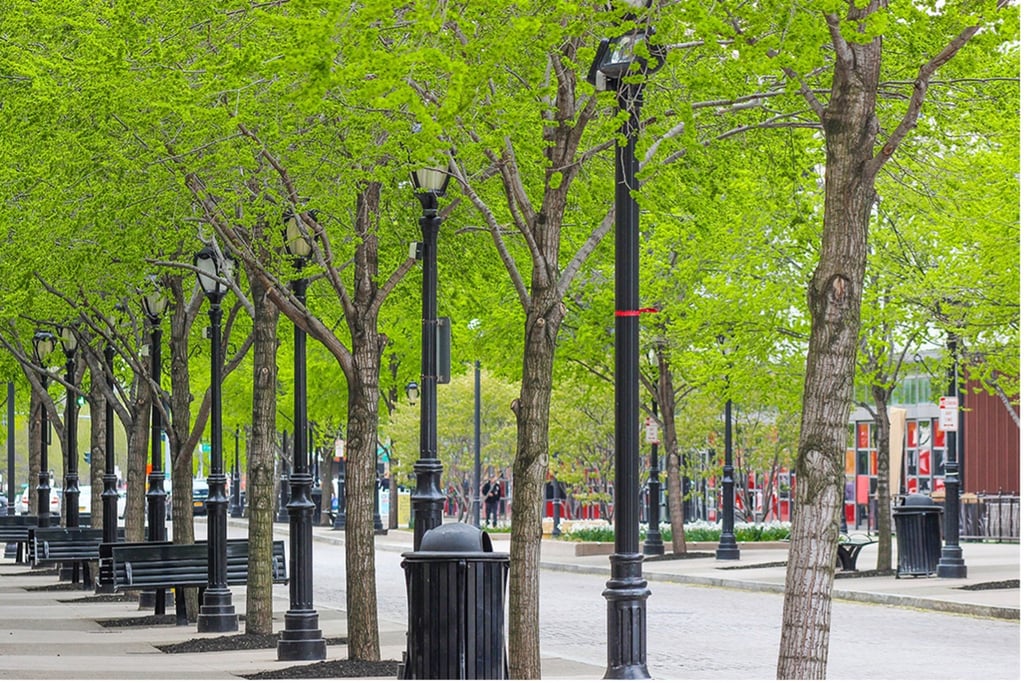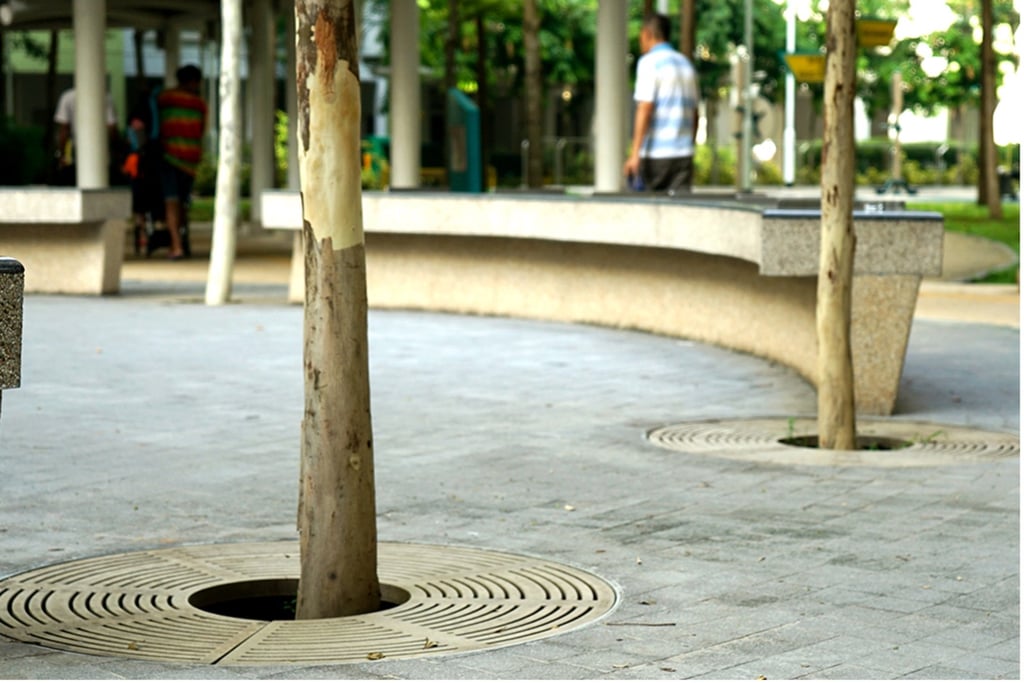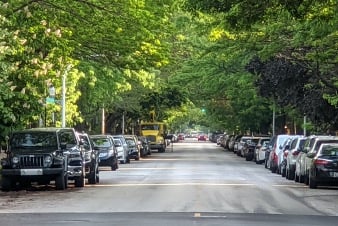When most people think of urban street trees, they restrict their thinking to the beauty provided by a tree. But, the benefits of street trees go far beyond looks. Trees can offer several environmental, economic, aesthetic, and even safety benefits as well. A study of five cities in the US showed benefits of USD 1.50- $3.00 for every dollar invested in trees. Let's take a look at 11 of the most significant benefits street trees provide.
Environmental benefits
The environmental benefits of street trees are some of the most direct. Trees make the street area more comfortable, reduce water damage, and decrease pollution.
- Street trees protect from the sun and precipitation, making it much more comfortable for pedestrians. They provide shade which reduces the heat from pavement and benches. In fact, up to an 11-25°C difference can be felt under shaded streets instead of unshaded streets.
- This reduction in temperature means the temperature of the pavement below will be more stable. Less heating and cooling cycles can reduce pavement maintenance needs and slow deterioration. Trees can add up to 40-60% more life to asphalt.
- Street trees can also significantly decrease air pollution and greenhouse gas emissions. Lower energy demands mean fewer air pollutants. Plus, trees can sequester carbon dioxide. Street trees can absorb nine times more contaminants than trees that are further away.
 Street trees provide a wide range of environmental, economic, aesthetic, and safety benefits.
Street trees provide a wide range of environmental, economic, aesthetic, and safety benefits.
- Trees can also absorb water through both their leaf system and root system. This helps reduce runoff and possible flooding. Any water that is absorbed by the tree is filtered as well, increasing water quality.
Tree roots hold the soil together, preventing soil erosion. This creates deeper soil, which can absorb even more water. This becomes a cycle that better increases drainage at the street level. But, it is essential to protect the tree roots via tree grates, so they can continue holding the soil together.
Street trees, tree grates, and economics
There are also several economic benefits of street trees. These can benefit homeowners, businesses, and even the city as a whole.
- Street trees can help increase the income of local businesses. Businesses located on tree-lined streets can see up to 14% higher income streams than businesses in plazas or treeless streets. People are more likely to walk around these streets and spend more time at local businesses.
- A more moderate climate provided by trees decreases energy demand, leading directly to cost savings. In the summer, shade and lower air temperatures mean lower air conditioning needs. Windbreaks and climate moderation effects lead to decreased heating usage.
- Street trees also directly add value for homes, businesses, and the tax base and cities' operating budgets. For example, homes on tree-lined streets may sell for up to 5-10% more than their counterparts without trees.
Aesthetic benefits of trees and tree gratings
Some people may think street trees are installed "just to look pretty" and dismiss this benefit as unimportant. However, improving the visual appeal of an area can have some direct, practical benefits as well.
 Both street trees and tree grates can provide aesthetic value to an area.
Both street trees and tree grates can provide aesthetic value to an area.
- Trees provide an easy, cost-effective way to beautify almost any street. They add natural elements to otherwise hardscape-focused areas. Even the tree grating surrounding the tree serves to break up the hardscape and incorporate new designs.
Street trees can help frame and separate spaces visually. They soften or screen necessary, but often not beautiful features, including light poles and utility poles. - All of this beautification can impact the psychological health of people who use the area. Trees can decrease blood pressure and cortisol levels, creating a calming effect and improving mental health. It can even reduce road rage in motorists. Plus, people are more likely to spend more time outside, potentially leading to more active lifestyles.
Safety benefits
Safety is an important part of city planning. This is especially true when it comes to areas where vehicles and pedestrians are in close proximity to one another. Street trees can improve the general safety of these areas for both parties.
- Streets lined with trees see a reduction in traffic speeds. In fact, up to a 3-15 mph difference can be noted in these areas, reducing the number of potential crashes. Even when collisions do occur, those on tree-lined streets are often less severe compared to treeless streets.
 Trees provide safety benefits for motorists and pedestrians.
Trees provide safety benefits for motorists and pedestrians.
- Street trees also double as a physical and visual separation from motorists with pedestrian traffic. A wall of trees is a noticeable reminder of where the road ends and where the sidewalk begins. The trees can then be combined with tree grates and planting strips to reinforce this physical and visual separation even further. In addition to all of this, trees increase traffic signs' visibility, making the roads safer.
Final thoughts
Street trees provide a whole host of benefits to the surrounding area. Everyone knows they can immediately add some visual appeal, but there are even more positives to consider. With environmental, aesthetic, economic, and safety benefits, street trees should be at the top of every city planner's list.










